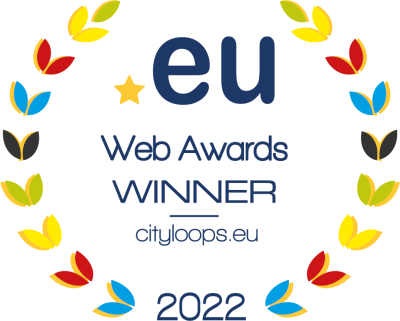Bio-waste valorisation
The benefits of separate collection can only be harnessed with effective valorisation (or treatment) of collected bio-waste. The most common treatment options are composting and anaerobic digestion. In line with the waste hierarchy, the bio-waste treatment technology that allows the greatest recovery of both material and energy is generally the environmentally preferable option. However, the nature of waste collected as well as its context (collection system in place, state of soil, importance of primary sector…) also greatly influence the sustainability and the feasibility of valorisation options. In this section, an instrument developed in Apeldoorn provides users with an overview of sorting and treatment methods for different types of green spaces waste, to support decision making.
The list of innovative sorting and treatment methods can be used to identify the best treatment option for different categories of green space waste. Bio-waste that is collected from households, industry or in this case green spaces contains impurities: components that are undesired or hamper the use of bio-waste in the circular economy. Removing these impurities is crucial to enable the correct processing of this material stream. One of the options envisaged to create value from bio-waste rather than having to pay to discard bio-waste is the cleaning of bio-waste by the city.
CityLoops demonstration experiences
Lessons learnt
- As long as respective sorting and treatment approaches are new to a city, involving an independent adviser (e.g. R&D institute, university) may reduce the reliance on the well-meaning, but potentially biased advice of customers of the bio-waste.
- Current use of bio-waste is mostly limited to composting and biogas production. Pre-treating biowaste to be suitable in other applications is a new step.
- Bokashi is a good alternative to traditional composting. It relies on a fermentation process that converts bio-waste into a soil amendment which adds nutrients to the soil and improves soil texture.
- Bokashi can be an especially valuable solution for cities with green spaces that want to take action to improve the quality of their soil, and by doing so promote healthy growth of greenery.
- Biochar is suitable for cities that want to enhance soil fertility, improve crop yields, enhance soil retention, improve the environmental impact of urban infrastructure, and enhance the availiability and retention of nutrients.
- Bio-waste recycling offers the potential for producing higher added value products, such as bioplastics, biofibers, enzymes, bio-chemicals, and oils. This does cost more resources and requires advanced technologies and processes.
- Biorefineries can play a significant role in the production of high-value added products. A biorefinery is a facility that integrates various biological and chemical processes to convert different bio-waste streams into valuable products, including biofuels, biochemicals, and biomaterials.
- Producing high-value end production from bio-waste is especially useful for cities that want to create new economic opportunities, are at the forefront of innovation, and have a strong focus on resource recovery.
- The strengths and challenges in using bio-waste in industrial applications are mostly unknown to industries that are currently using wood or fibre crops as raw material. The effect of new sorting and treating methods on the applicability of the bio-waste in industry will therefore need to be demonstrated in larger scale trials.

